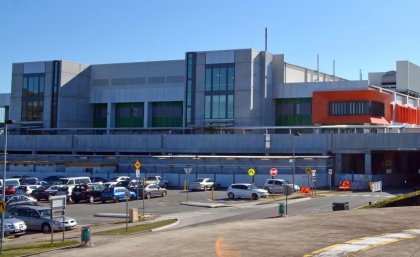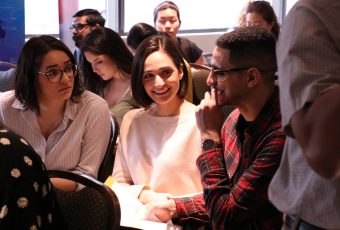Clinical training for UQ medical and allied health students get a boost
Clinical training for University of Queensland medical and allied health students will be boosted with the opening of student training centres this week at the Queen Elizabeth II Jubilee and Redland hospitals.
UQ Vice-Chancellor Professor Peter Høj said the new facilities would revolutionise training practices at the hospitals and offer more clinical placement opportunities for students.

“Working with our hospital partners at Redland and QEII Jubilee hospitals, these purpose-built centres will allow us to train more students and offer greater flexibility in how that training is delivered,” Professor Høj said.
“Rooms are equipped with high-speed internet services and video-conferencing, allowing the centres to fully support remote teaching and enable staff and students to actively engage in knowledge exchange with our other local and offshore clinical schools.”
The training centres have been built with $2.2 million from the Federal Government Health Workforce Australia Fund and $1.15 million from UQ, on hospital campus sites provided by the State Government’s Metro South Hospital and Health Service.
About 300 UQ medical students rotate through the Redland and QEII Jubilee hospitals each year for specialist training in medicine, surgery, gynaecology and critical care disciplines.
A further 100 students from other UQ schools rotate through the sites for clinical training in areas such as physiotherapy, occupational therapy and pharmacy.
UQ School of Medicine head Professor Darrell Crawford said both QEII and Redland hospitals lacked dedicated teaching areas for students and office space for academic and administrative staff before the training centres were built.
He said the construction of the centres was only possible due to the excellent partnership between the university and the hospital executive teams.
“Training medical students would not be possible without close relationships between the university and our health sector partners like the QEII and Redland Hospital executive and the Metro South Hospital and Health Service,” Professor Crawford said.
“UQ is acutely aware of the support we receive from hospitals and partners in the health sector, and acknowledge that students in medicine and allied health professions would not receive high-quality clinical training without them.
“We thank them for giving students the opportunity to integrate into a clinical environment and to apply what they learn in classrooms to a real-life setting.
“I am enormously proud of the professionalism of the students we are jointly educating, and know that our community will reap the benefits of well-trained graduates.”
*

































Ask A Question
Ask us about your program of interest, or if you have a question about our services.
CONTACT US TODAY